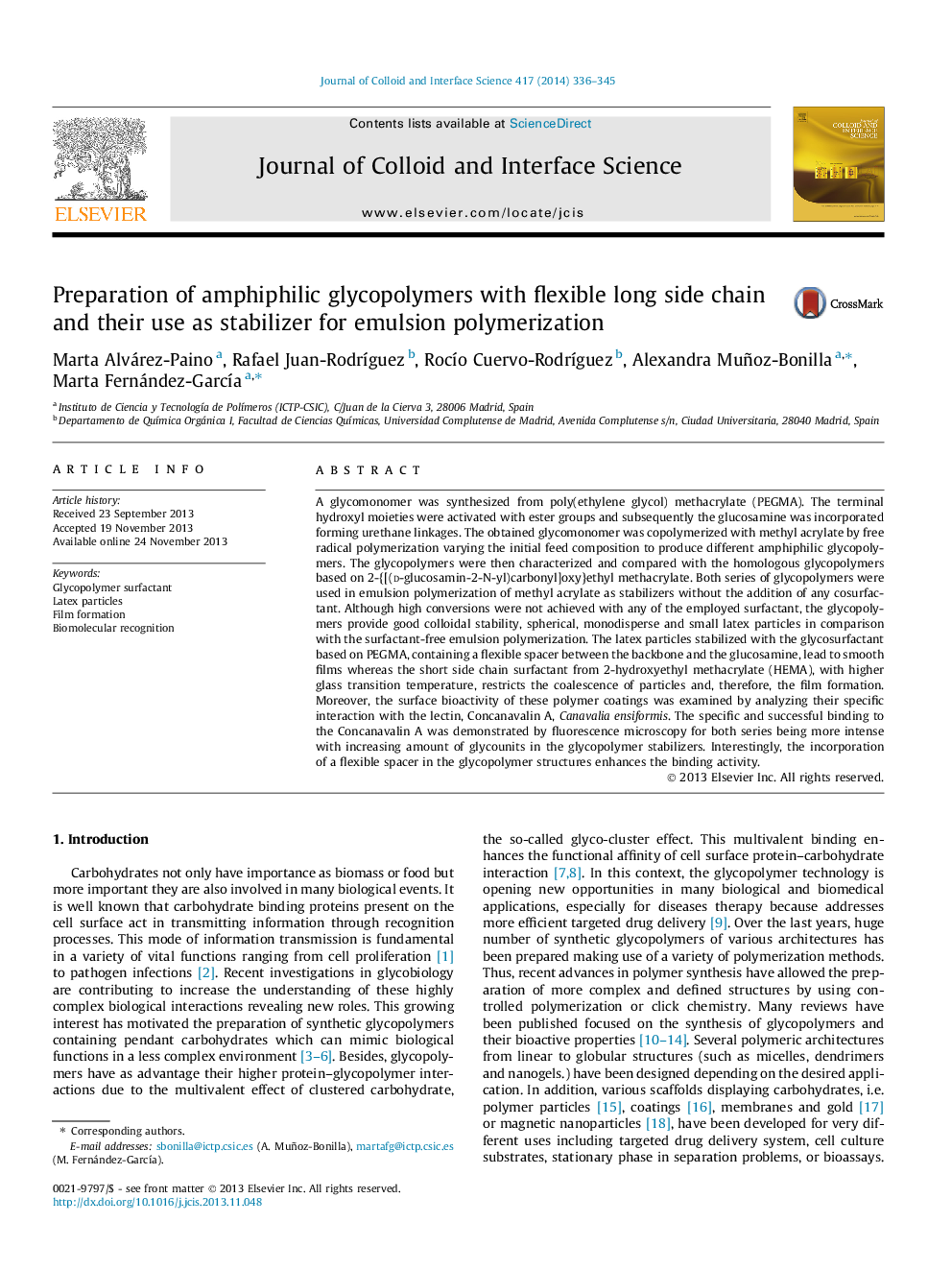| Article ID | Journal | Published Year | Pages | File Type |
|---|---|---|---|---|
| 607565 | Journal of Colloid and Interface Science | 2014 | 10 Pages |
•Water soluble amphiphilic glycopolymers bearing PEG side chain are successfully used as surfactants.•The presence of flexible PEG spacer in the glycopolymer allows obtaining flat decorated surfaces.•The Concanavalin A lectin interaction with surface is dependent on the carbohydrate units’ content.•Flexible PEG side chain favors the carbohydrate–lectin aggregation.
A glycomonomer was synthesized from poly(ethylene glycol) methacrylate (PEGMA). The terminal hydroxyl moieties were activated with ester groups and subsequently the glucosamine was incorporated forming urethane linkages. The obtained glycomonomer was copolymerized with methyl acrylate by free radical polymerization varying the initial feed composition to produce different amphiphilic glycopolymers. The glycopolymers were then characterized and compared with the homologous glycopolymers based on 2-{[(d-glucosamin-2-N-yl)carbonyl]oxy}ethyl methacrylate. Both series of glycopolymers were used in emulsion polymerization of methyl acrylate as stabilizers without the addition of any cosurfactant. Although high conversions were not achieved with any of the employed surfactant, the glycopolymers provide good colloidal stability, spherical, monodisperse and small latex particles in comparison with the surfactant-free emulsion polymerization. The latex particles stabilized with the glycosurfactant based on PEGMA, containing a flexible spacer between the backbone and the glucosamine, lead to smooth films whereas the short side chain surfactant from 2-hydroxyethyl methacrylate (HEMA), with higher glass transition temperature, restricts the coalescence of particles and, therefore, the film formation. Moreover, the surface bioactivity of these polymer coatings was examined by analyzing their specific interaction with the lectin, Concanavalin A, Canavalia ensiformis. The specific and successful binding to the Concanavalin A was demonstrated by fluorescence microscopy for both series being more intense with increasing amount of glycounits in the glycopolymer stabilizers. Interestingly, the incorporation of a flexible spacer in the glycopolymer structures enhances the binding activity.
Graphical abstractFigure optionsDownload full-size imageDownload high-quality image (153 K)Download as PowerPoint slide
